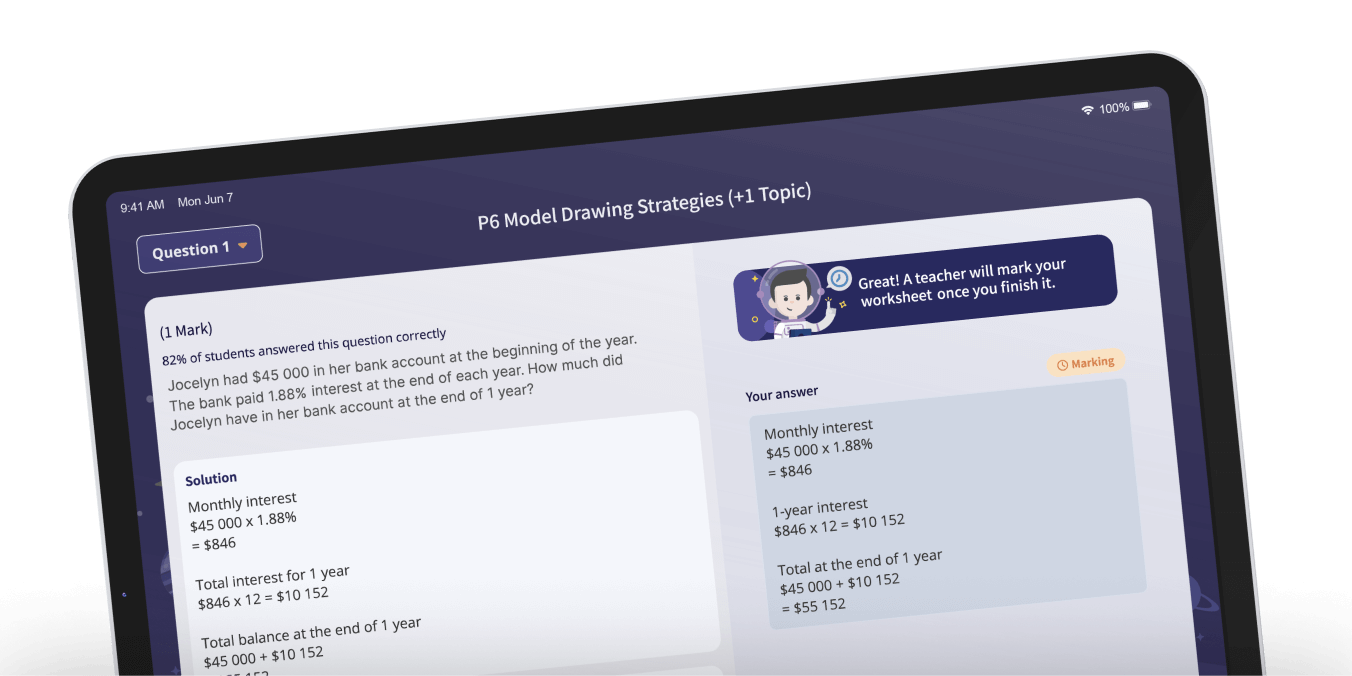Setting SMART goals for your child in a new academic year

It’s the start of a new academic year once again. Things may seem a little hazy for your little ones after enjoying a long school break, and you may wonder how they can weave back into a proper study mode.
This is where you can empower your child to set goals for the year ahead using the SMART goal-setting criteria. But first of all, what is goal-setting, and why should your child set goals? Goal-setting is the process of establishing goals that one aims to achieve in a specific timeframe. Here are some benefits of goal-setting your child can take advantage of.
Benefits of goal-setting
Improves time management skills
Goal-setting helps students develop the ability to efficiently complete tasks within a specific period of time. Having a clear plan provides less room for procrastination if your child already has their eyes on the prize. Besides being able to properly manage their time in school, they can apply these time management skills in their personal lives as well.
Increases motivation
Most would remember the thrill of finally being able to ride a bicycle on their own. We felt invincible and probably felt like zooming down a slope! Similarly to that, being able to achieve small milestones and seeing how far they’ve come motivates your child to do even better. At the same time, it boosts their self-confidence and enables them to set more ambitious goals for themselves in the future.
Identifies strengths and weaknesses
In the midst of achieving goals, your child will be able to figure out what their strengths and weaknesses are. Knowing this will help your child focus on improving what they are weak at, and also allow them to further hone what they excel at.
What are SMART goals and how can my child use them?
SMART is an acronym for specific, measurable, attainable, relevant, and time-bound. These are conditions you can use to set better goals for your child, and break down large ambitions into bite-sized actionable steps they can realistically follow through with. Let’s walk through how to set a SMART goal with improving your child’s command of English as an example.
Specific
Your child’s goal needs to be definitive so that there’s no ambiguity. It has to be as clear as possible to allow them to understand what exactly they need to do to achieve it. For instance, ‘I want to improve my English score from 60 to 70’ is more specific than ‘I want to improve my English’.
Measurable
To know if your child is making good progress, the goal should be quantifiable. It should include how many or how much of something they need to do or attain. Let your child know this component usually involves a number of some sort. For instance, the goal should indicate how many books they should read a month or how long they should read per day to improve their English.
Attainable
Think about whether the goal you’ve just set for your child is attainable or not. If you lead a sedentary lifestyle, then signing up for the next marathon in town might not be the best thing to work towards. The goal should neither be too easy nor too hard - find a balance and set realistically attainable goals. For instance, reading 5 new books a month is attainable - whereas reading 20 is not.
Relevant
These goals should align with your child’s long-term vision. If a particular goal doesn’t bring your child closer to reaching their larger objective, then it’s not relevant. Some questions to consider include asking your child why this goal is important in supporting their larger objective, and how they will benefit from it once it has been attained. For instance, joining a board game extracurricular activity in school instead of a reading club isn’t relevant to the larger objective of improving your child’s English.
Time-bound
A deadline needs to be set for your child to stay focused and motivated towards achieving their goals. Having such a timeline will give your child milestones that keeps them moving forward to reach their larger objective. For instance, your child aims to improve their grades by the end of the semester. Therefore, they would work towards doing all that is necessary to improve their grades within that semester.
Conclusion
One thing to keep in mind when teaching your child to set SMART goals, is to allow them to set their own goals. This empowers your child and gives them a sense of responsibility and ownership to work towards their goals. As a parent, you can help your child brainstorm their goals, but remember that ultimately they should be the ones making those choices!


 SG
SG  VN
VN 



















